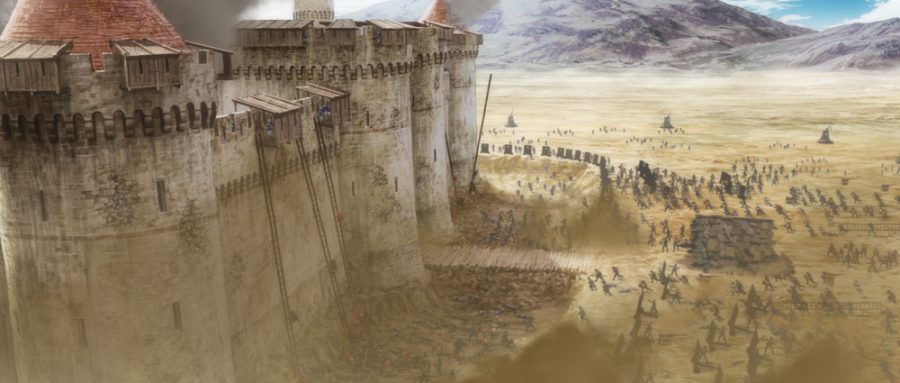Berserk: The Golden Age Arc 1 – The Egg of the King
Showing @ Filmhouse, Edinburgh Fri 19 Oct only
Toshiyuki Kubooka / Japan / 2012 / 80 min
Berserk: The Golden Age Arc 2 – The Battle for Doldrey
Showing @ Filmhouse, Edinburgh Sat 20 Oct only
Toshiyuki Kubooka / Japan / 2012 / 80 min
With over 100,000 people protesting against the cuts at last week’s TUC March, it’s clear there are many who believe their voice can make a difference against the government. It’s this attitude of empowerment that resonates most in Toshiyuki Kubooka’s debut feature length films. In medieval Europe, a wandering soldier, Guts, joins mercenary legion, The Band of the Hawk. When the charismatic leader Griffiths joins the King of Midland in a war against the Kingdom of Chuder, Guts’ notoriety as a fearsome warrior grows in tandem with his complex relationships with Griffiths and the Hawk’s female captain Casca. While the Hawks are vital in battle however, many Midlanders resent their elevated position in civilian life.
Adapted from Kentaro Miura’s 1990 Manga story Berserk, the serialised ‘Golden Age Arc’ trilogy spans Vol. 3–14 of the ongoing saga (Vol. 36 was published 19.09.12). While slightly abridged, Kubooka remains faithful to the original, the onscreen versions almost identical to the print apart from the addition of colour, injecting a bright potency into the narrative when combined with the exceptional animation. Scenes of crimson fountains spurting from severed limbs confirm the Berserk machismo, and could easily be read as a violent celebration of mankind’s bloodthirsty history.
The greater depth comes from prominent themes of sexuality, represented both in the gender divide (the Japanese tradition of women serving men is witnessed when Casca is ordered to lie with the injured Guts to keep him warm), and with the homosexual undertones between Guts and Griffiths. Despite the misogyny, Miura’s story does partially advocate feminism, the mettlesome Casca a powerful role model. After pulling Casca from a river, Guts warms her by lying with her, a role reversal that off-centres their relationship by creating responsibility intrigue.
For an account of medieval battles, little is mentioned of honour, especially regarding its importance in Japanese culture. Instead, the protagonists inevitably fight for money, the rampant brutality in exchange for cash, emphasising the class divide between knight and mercenary. As the original Manga series was published at the end of Japan’s asset bubble (1986-1991), the story’s strong economic flavour reflects a mood when everybody believed they could achieve wealth. But it’s the distinction between ‘High Born’ and ‘Low Born’ that’s the most focussed, exemplified in Casca’s referral to a royal banquet as a ‘stuffy function’, as both Miura and Kubooka highlight how status shouldn’t define you or limit your aspirations. Whether it’s social position, gender or sexuality that superficially inhibits a character, Miura’s tales promote an independent, rich and can-do lifestyle.
Showing as part of Scotland Loves Animation 2012.
Click here to learn details from the Berserk Wiki.


Comments